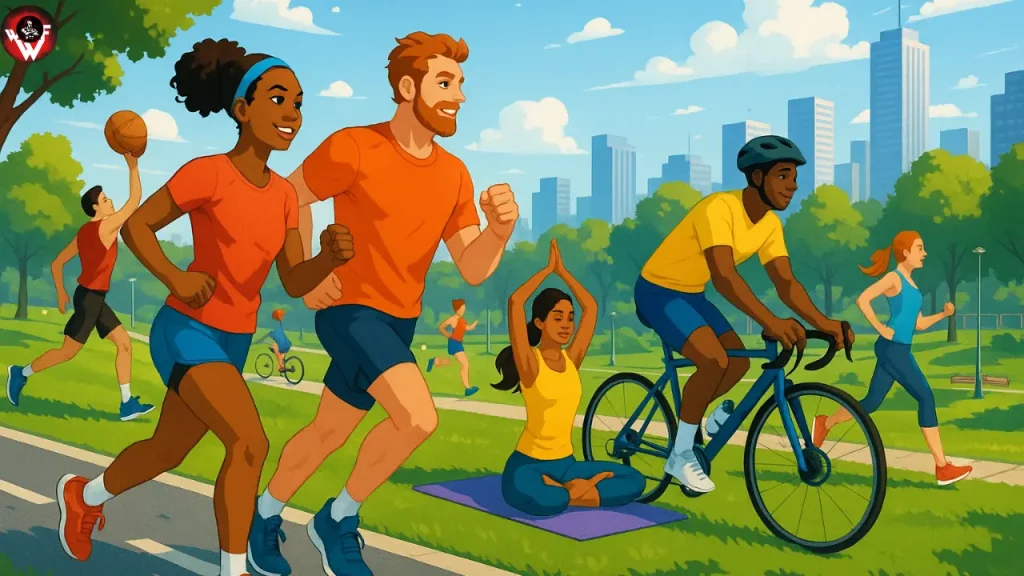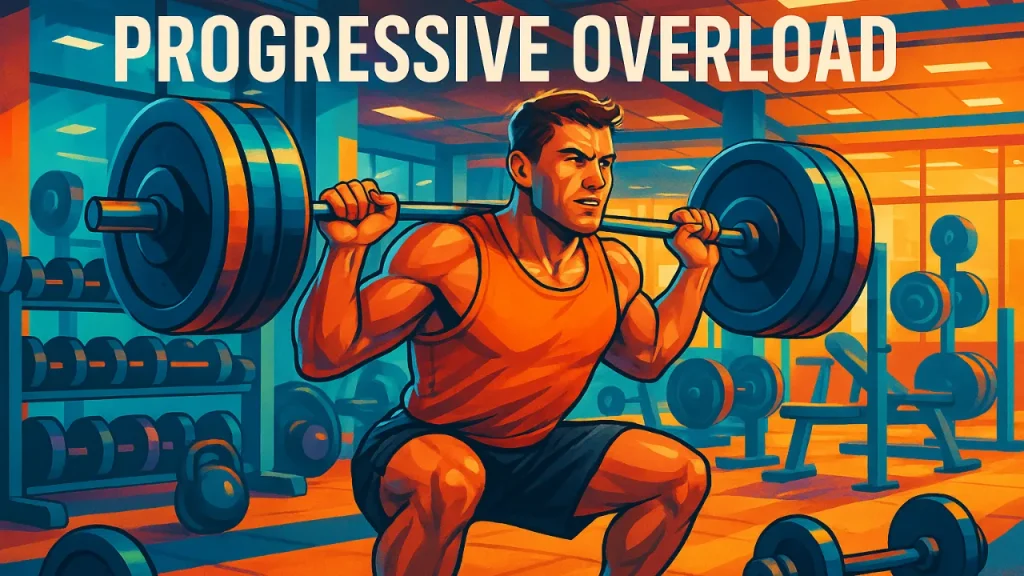Bouldering is a physically demanding activity that tests both strength and endurance. As you climb up those challenging walls, you’re engaging multiple muscle groups in your body, especially your arms, back, and legs. But after a bouldering session, should you continue with muscle group workouts? The answer depends on various factors, including your recovery needs, goals, and training regimen. Let’s explore whether separating your muscle group workouts after bouldering sessions is a good idea.
What is Bouldering?
Bouldering is a form of rock climbing that involves climbing short, yet challenging routes called “problems” without the use of ropes. It’s typically done on rocks or indoor climbing walls that are 10–20 feet tall. The primary goal is to climb with power, precision, and technique. This intense activity places considerable stress on your muscles, especially your upper body, core, and legs, as you work through various holds and movements.
Bouldering primarily engages muscles in the forearms, shoulders, back, and core. Your legs, while crucial for pushing yourself upwards, don’t always get the attention they deserve. This creates an imbalance between muscle groups, which can potentially affect your overall strength and muscle recovery.
The Need for Muscle Recovery
After any intense workout or climbing session, recovery is key. When you boulder, you subject your muscles to strain, causing microscopic tears in the muscle fibers. In response, your body works to repair these fibers, making them stronger and more resilient. This process of muscle recovery is crucial for building strength and preventing injury. Without proper recovery, you risk overtraining, which can lead to fatigue, muscle strain, and even injury.
What Are Muscle Group Workouts?
Muscle group workouts are structured exercises that target specific sets of muscles. These workouts typically involve focusing on one or two major muscle groups per session—such as chest and triceps, back and biceps, or legs and glutes. The idea is to give each muscle group enough time to recover between workouts to maximize strength and hypertrophy (muscle growth).
Common examples of muscle group workouts include:
- Upper Body: Push-ups, bench press, shoulder press, rows
- Lower Body: Squats, lunges, leg press, calf raises
- Core: Planks, crunches, leg raises, Russian twists
Why Separate Muscle Group Workouts After Bouldering?
After a bouldering session, separating muscle group workouts can be highly beneficial. Bouldering is a full-body workout that engages multiple muscle groups simultaneously, leading to muscle fatigue. If you immediately follow your bouldering session with another workout targeting similar muscle groups, you risk overtraining and reducing the effectiveness of both activities.
Here’s why it’s a good idea to separate workouts:
- Recovery Benefits: By separating muscle group workouts, you give your muscles time to recover and repair, leading to better overall strength gains and performance.
- Reduced Fatigue: Bouldering already taxes your muscles, and continuing to work the same muscles without adequate rest can lead to muscle exhaustion.
- Effective Targeting: When you separate muscle groups, you can focus on individual muscles, ensuring that you’re targeting them properly and effectively.
How Bouldering Impacts Your Body
Bouldering places considerable demand on your body’s muscles. It requires explosive strength, endurance, and coordination. Climbing uses your forearms for grip strength, your back for pulling yourself up, your shoulders for stability, and your core for balance. Over time, this builds strength, but it can also lead to muscle fatigue if not managed properly.
Signs You Should Separate Muscle Group Workouts
If you’re feeling excessively fatigued after bouldering or if your muscles are sore, it’s a clear sign that your body needs rest. Listen to your muscles—if they’re tired or sore, it’s best to focus on recovery before hitting the gym again. Another sign to separate workouts is if you notice decreased performance in either bouldering or your strength training.
Benefits of Separating Muscle Group Workouts
- Enhanced Muscle Recovery: By giving specific muscle groups time to rest, you allow for more effective recovery, which ultimately leads to greater strength development.
- Preventing Injury: Overworking fatigued muscles can lead to strains and injuries. Separating workouts helps avoid this risk.
- Increased Strength Gains: When muscles recover properly, they become stronger. By focusing on specific muscle groups after bouldering, you can maximize strength development.
When Not to Muscle Group Workouts
There are instances where combining muscle group workouts with bouldering may be appropriate. For example, if you’re training for both strength and endurance, you might choose to incorporate muscle group workouts that focus on the lower body or areas that are not heavily engaged in bouldering. In this case, it’s important to listen to your body and adjust as needed.
How to Separate Workouts After Bouldering
Here’s an example of how you might schedule your muscle group workouts after bouldering:
- Day 1: Bouldering
- Day 2: Upper body strength training (chest, back, shoulders)
- Day 3: Rest or active recovery (light cardio, yoga, stretching)
- Day 4: Lower body strength training (legs, glutes)
- Day 5: Rest or core workout
- Day 6: Bouldering or another active workout
- Day 7: Rest
This schedule allows for muscle recovery while keeping the focus on different muscle groups on separate days.
Common Myths About Separating Workouts
One common myth is that you need to work out hard every day to see results. In reality, overtraining can hinder progress and increase the risk of injury. Another myth is that separating workouts isn’t necessary if you’re in great shape, but muscle recovery applies to all levels of fitness.
Importance of Proper Nutrition Post-Bouldering
Proper nutrition is essential for muscle recovery. After a bouldering session, ensure you’re consuming a balanced meal with protein, healthy fats, and carbohydrates. Protein is particularly important for muscle repair and growth, while carbohydrates help replenish energy stores.
How to Monitor Your Progress
Keep track of your performance and adjust your workouts as necessary. If you notice that your muscles aren’t recovering well, it may be time to change your training schedule. Regularly assessing your progress will help you stay on track.
Tips for Optimizing Recovery
- Incorporate stretching and foam rolling into your post-workout routine.
- Get plenty of sleep to allow your muscles to repair.
- Stay hydrated, as dehydration can delay muscle recovery.
- Use proper techniques to avoid injury.
Conclusion
Incorporating muscle group workouts after bouldering can be beneficial, but it’s essential to separate them to ensure proper muscle recovery and prevent overtraining. Listen to your body, and don’t be afraid to give yourself a rest day when necessary. With the right balance, you can enhance your performance in both bouldering and strength training.
FAQs:
- How long should I wait before doing muscle group workouts after bouldering?
- Ideally, you should give your muscles 24 to 48 hours to recover before focusing on other muscle groups.
- Can I do lower body strength training the same day as bouldering?
- Yes, as long as your legs aren’t overly fatigued from bouldering. However, focusing on upper body workouts is usually a safer option.
- Is it necessary to separate workouts if I’m a beginner climber?
- Yes, beginners also benefit from muscle recovery, which helps prevent injury and ensures steady progress.
- How do I know if I’m overtraining after bouldering?
- If you feel excessively sore, fatigued, or experience a decrease in performance, it may be a sign of overtraining.
- What should I eat after a bouldering session to support muscle recovery?
- A post-workout meal rich in protein, carbohydrates, and healthy fats will help your muscles recover and rebuild. Consider a protein shake or a balanced meal with chicken, vegetables, and quinoa.
Please don’t forget to leave a review.
Explore more by joining me on Patreon




